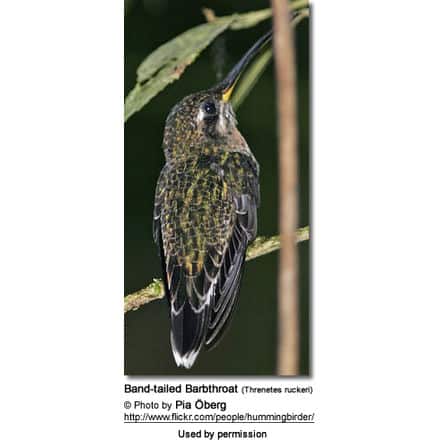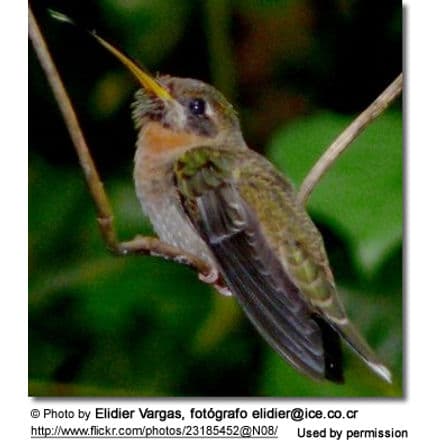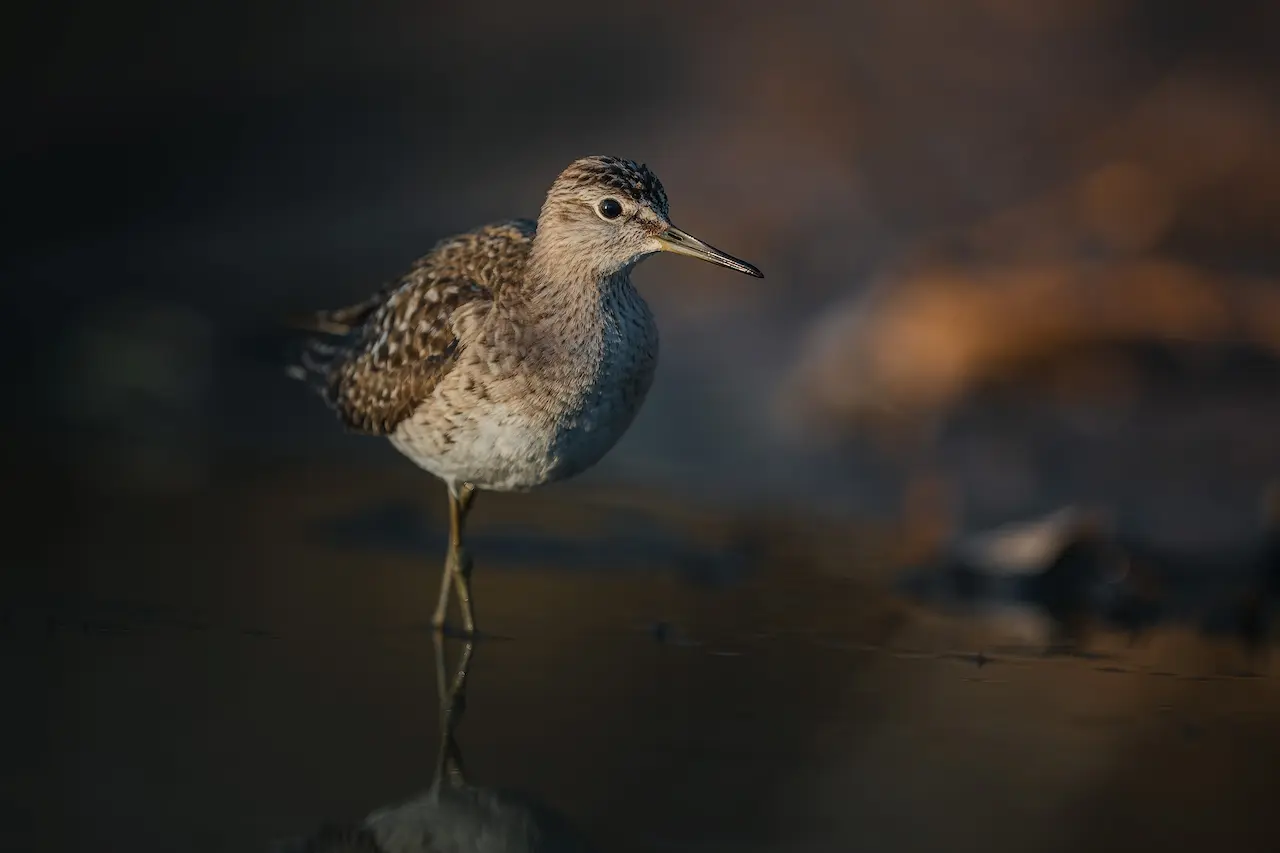Band-tailed Barbthroats
The Band-tailed Barbthroats (Threnetes ruckeri) – also commonly known as Rucker’s Hermit, Rucker’s or Blue Fan-tailed Barbthroat – is a medium-sized hummingbird that is resident in Central and South America.
Alternate (Global) Names
Spanish: Ermitaño Barbudo, colibrí colirayada … Spanish: colibrí colirayada, Ermitaño Barbudo, Ermitaño Barbudo Colibandeado, Pico de Sable de Cola Negra … Italian: Barbuto codafasciata, Colibrì barbuto di rucker … French: Ermite à queue barrée, Ermite de Rucker, Ermite de Rücker … Czech: Kolibrík pruhoocasý, kolib?ík pruhoocasý … Danish: Båndhalet Skægstrube … German: Bindenschwanzeremit, Bindenschwanz-Eremit, Weißbinden-Schattenkolibri … Finnish: Liekkikaulurikolibri … Japanese: obiohigehachidori … Dutch: Bandstaartbaardkolibrie, Bandstaart-baardkolibrie … Norwegian: Båndhaleeremitt … Polish: pustelnik pregosterny, pustelnik pr?gosterny … Russian: ??????????????? ????????? ??????? … Slovak: ciernobrádok pruhochvostý … Swedish: Bandstjärtseremit
Distribution / Habitat
The Band-tailed Barbthroats occur naturally in Central America south to northwestern South America.
They are quite common in wet lowland forests on the Caribbean and Pacific slope; specifically the Caribbean slope of Belize, eastern Guatemala, Honduras and Nicaragua, then along both slopes of Costa Rica to western Panama. In South America, they occur in western Colombia; northwestern Ecuador and western Venezuela.
They are mostly found in lowland areas, up to an elevation of 800 m (~2,600 ft), although juveniles may move up to higher altitudes. They inhabit forest edges, the understory of primary and disturbed forests, dense second-growth, shrubbery and plantations, and are often seen near rivers.

Subspecies and Ranges
-
- Threnetes ruckeri ruckeri (Bourcier, 1847) – Nominate Race
- Range: Northern and western Colombia and western Ecuador.
- Threnetes ruckeri ventosus (Bangs and Penard, 1924)
- Range: Eastern Guatemala and Belize to Panama
- Range: Northwestern Venezuela
- Threnetes ruckeri ruckeri (Bourcier, 1847) – Nominate Race
Description
The Band-tailed Barbthroats (Threnetes ruckeri) measures 10.2–11 cm (4 – 4.3 inches) in length, and weighs 5-5.8 g (0.1 – 0.2 oz). It has a long slightly down-curved bill; a dark ear patch and dusky malar stripes.
The upper plumage is mostly bronze-green. The plumage below is grey, except for the rusty-orange chest. It has a round tail with black and white bands; and two green center tail feathers with white tips.
Females are similar to males.
Juveniles look like adults, but have buff feather tips.
Subspecies Differences: The southern subspecies, Threnetes ruckeri venezuelensis, is somewhat duller on the chest than the nominate northern race.
Calls / Vocalizations
The Band-tailed Barbthroats hummingbird’s call has been described as a high thin tseep, and the male’s song, given alone or at a lek (competitive mating display), as a didiDIT dew dew in the Caribbean lowlands, however, on the Pacific side the song is longer and includes various trills and warbles.

Nesting / Breeding
Hummingbirds are solitary in all aspects of life other than breeding; and the male’s only involvement in the reproductive process is the actual mating with the female. They neither live nor migrate in flocks; and there is no pair bond for this species.
Males court females by flying in a u-shaped pattern in front of them. He will separate from the female immediately after copulation. One male may mate with several females. In all likelihood, the female will also mate with several males. The males do not participate in choosing the nest location, building the nest or raising the chicks.
The female Band-tailed Barbthroats is responsible for building the remarkable cone-shaped nest which hangs by a single strong string of spiders’ silk and/or rootlets from some overhead support, which could be a branch or the underside of the broad leaves of, for example, Heliconia plants, banana trees or ferns about 3 – 6 ft (1 – 2 m) above ground.
However, these unusual nests have been found beneath bridges, in highway culverts and even hanging from roofs inside dark buildings. The nest is often near a stream or waterfall.
It is constructed out of plant fibers woven together and green moss on the outside for camouflage in a protected location. She lines the nest with soft plant fibers, animal hair and feather down, and strengthens the structure with spider webbing and other sticky material, giving it an elastic quality to allow it to stretch to double its size as the chicks grow and need more room.
The average clutch consists of two white eggs, which she incubates alone, while the male defends his territory and the flowers he feeds on. The young are born blind, immobile and without any down.
The female alone protects and feeds the chicks with regurgitated food (mostly partially-digested insects since nectar is an insufficient source of protein for the growing chicks). The female pushes the food down the chicks’ throats with her long bill directly into their stomachs.
As is the case with other hummingbird species, the chicks are brooded only the first week or two, and left alone even on cooler nights after about 12 days – probably due to the small nest size. The chicks leave the nest when they are about 20 days old.
Diet / Feeding
The Band-tailed Barbthroats Hummingbirds primarily feed on nectar taken from a variety of brightly colored, scented small flowers of trees, herbs, shrubs and epiphytes, such as Heliconia, Costus spiral gingers, and bananas. They favor flowers with the highest sugar content (often red-colored and tubular-shaped).
Hummingbird Resources
- Hummingbird Information
- Hummingbird Amazing Facts
- Attracting Hummingbirds to Your Garden
- Hummingbird Species
- Feeding Hummingbirds




